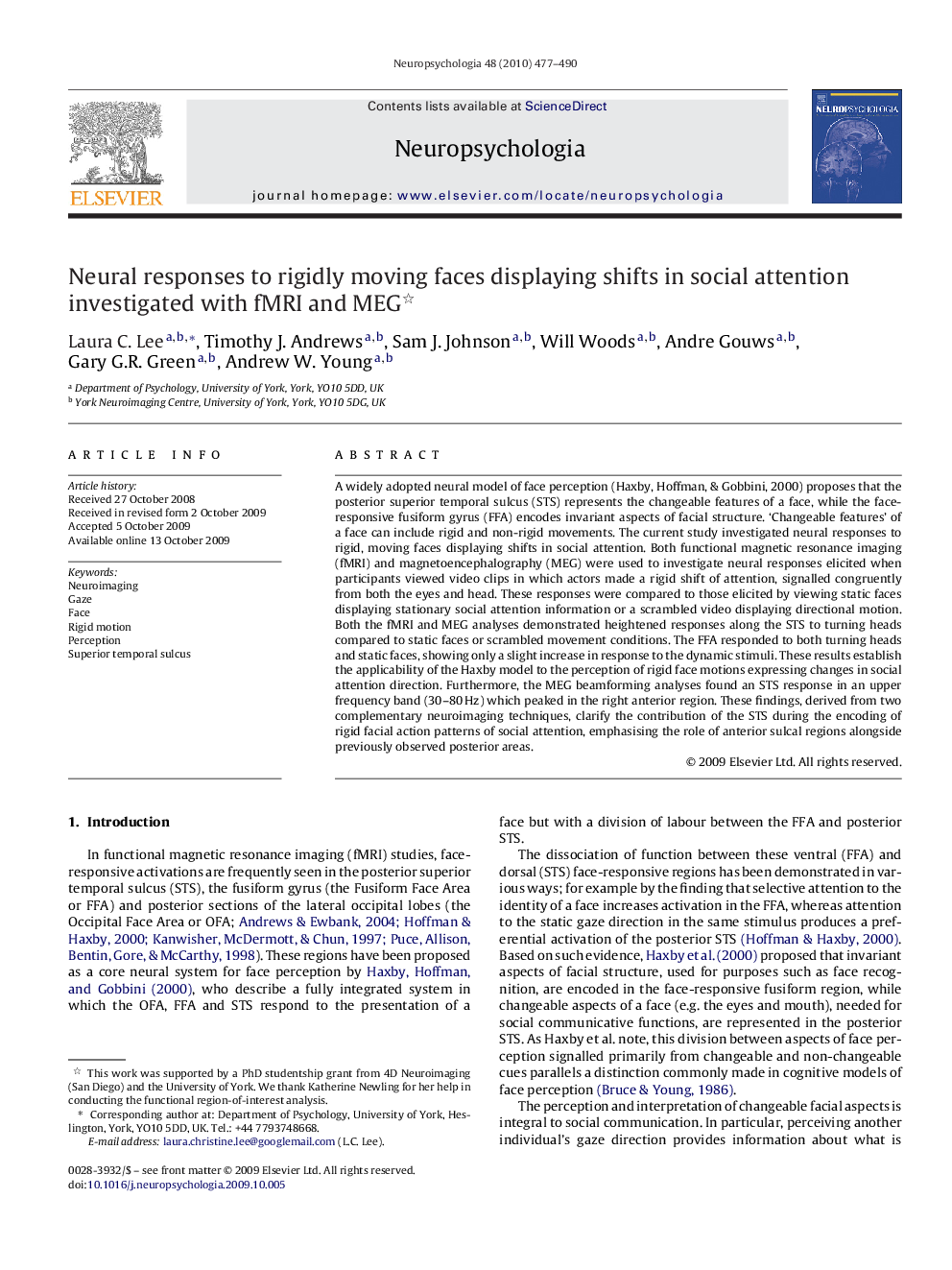| Article ID | Journal | Published Year | Pages | File Type |
|---|---|---|---|---|
| 10466445 | Neuropsychologia | 2010 | 14 Pages |
Abstract
A widely adopted neural model of face perception (Haxby, Hoffman, & Gobbini, 2000) proposes that the posterior superior temporal sulcus (STS) represents the changeable features of a face, while the face-responsive fusiform gyrus (FFA) encodes invariant aspects of facial structure. 'Changeable features' of a face can include rigid and non-rigid movements. The current study investigated neural responses to rigid, moving faces displaying shifts in social attention. Both functional magnetic resonance imaging (fMRI) and magnetoencephalography (MEG) were used to investigate neural responses elicited when participants viewed video clips in which actors made a rigid shift of attention, signalled congruently from both the eyes and head. These responses were compared to those elicited by viewing static faces displaying stationary social attention information or a scrambled video displaying directional motion. Both the fMRI and MEG analyses demonstrated heightened responses along the STS to turning heads compared to static faces or scrambled movement conditions. The FFA responded to both turning heads and static faces, showing only a slight increase in response to the dynamic stimuli. These results establish the applicability of the Haxby model to the perception of rigid face motions expressing changes in social attention direction. Furthermore, the MEG beamforming analyses found an STS response in an upper frequency band (30-80Â Hz) which peaked in the right anterior region. These findings, derived from two complementary neuroimaging techniques, clarify the contribution of the STS during the encoding of rigid facial action patterns of social attention, emphasising the role of anterior sulcal regions alongside previously observed posterior areas.
Related Topics
Life Sciences
Neuroscience
Behavioral Neuroscience
Authors
Laura C. Lee, Timothy J. Andrews, Sam J. Johnson, Will Woods, Andre Gouws, Gary G.R. Green, Andrew W. Young,
